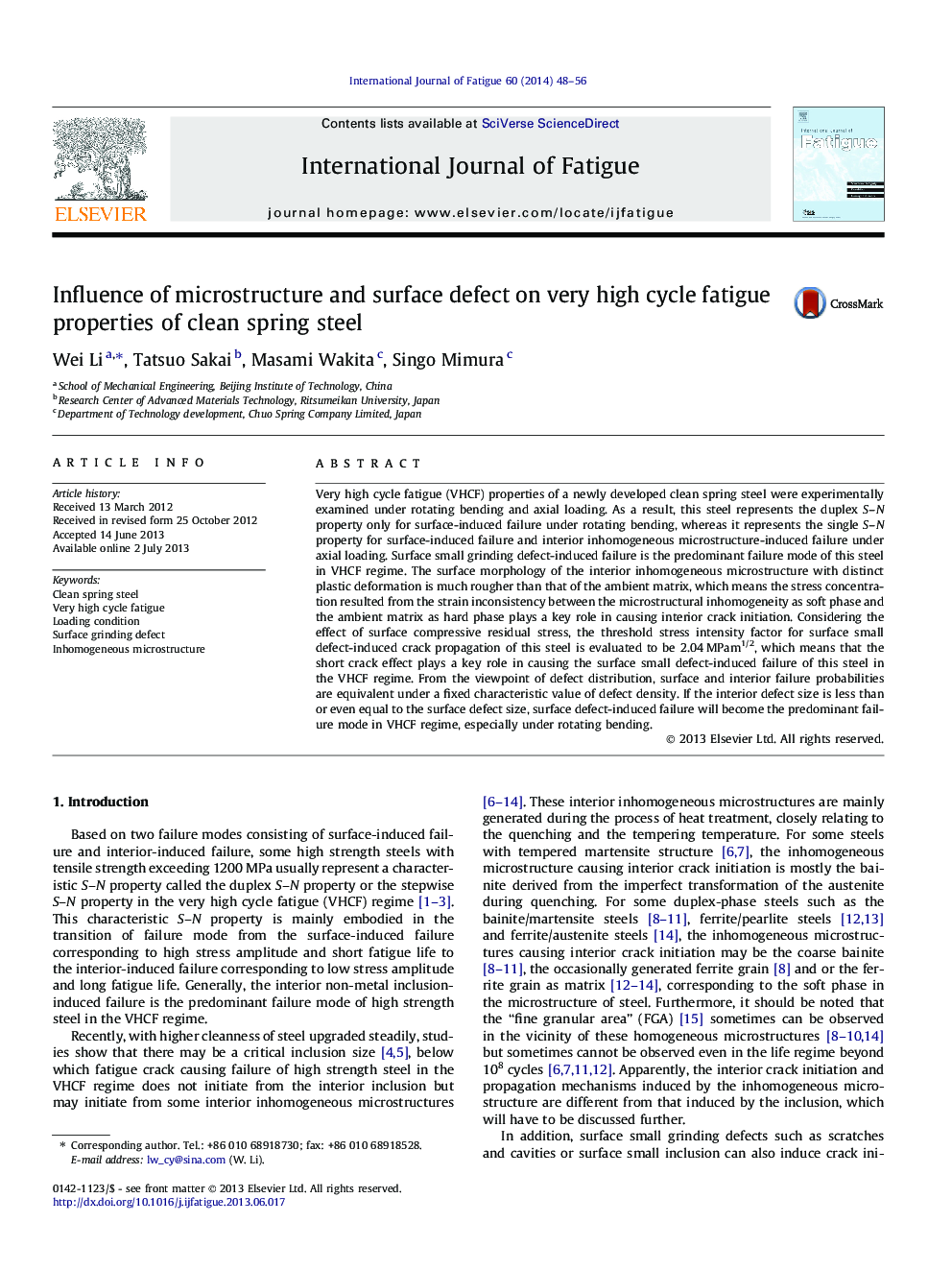| Article ID | Journal | Published Year | Pages | File Type |
|---|---|---|---|---|
| 780725 | International Journal of Fatigue | 2014 | 9 Pages |
•VHCF properties of a newly developed clean spring steel under RB and AL were clarified.•The microstructural inhomogeneity and surface grinding defect play a key role in causing VHCF failure.•Probabilities for surface and interior failure are equivalent under a certain defect density.
Very high cycle fatigue (VHCF) properties of a newly developed clean spring steel were experimentally examined under rotating bending and axial loading. As a result, this steel represents the duplex S–N property only for surface-induced failure under rotating bending, whereas it represents the single S–N property for surface-induced failure and interior inhomogeneous microstructure-induced failure under axial loading. Surface small grinding defect-induced failure is the predominant failure mode of this steel in VHCF regime. The surface morphology of the interior inhomogeneous microstructure with distinct plastic deformation is much rougher than that of the ambient matrix, which means the stress concentration resulted from the strain inconsistency between the microstructural inhomogeneity as soft phase and the ambient matrix as hard phase plays a key role in causing interior crack initiation. Considering the effect of surface compressive residual stress, the threshold stress intensity factor for surface small defect-induced crack propagation of this steel is evaluated to be 2.04 MPam1/2, which means that the short crack effect plays a key role in causing the surface small defect-induced failure of this steel in the VHCF regime. From the viewpoint of defect distribution, surface and interior failure probabilities are equivalent under a fixed characteristic value of defect density. If the interior defect size is less than or even equal to the surface defect size, surface defect-induced failure will become the predominant failure mode in VHCF regime, especially under rotating bending.
